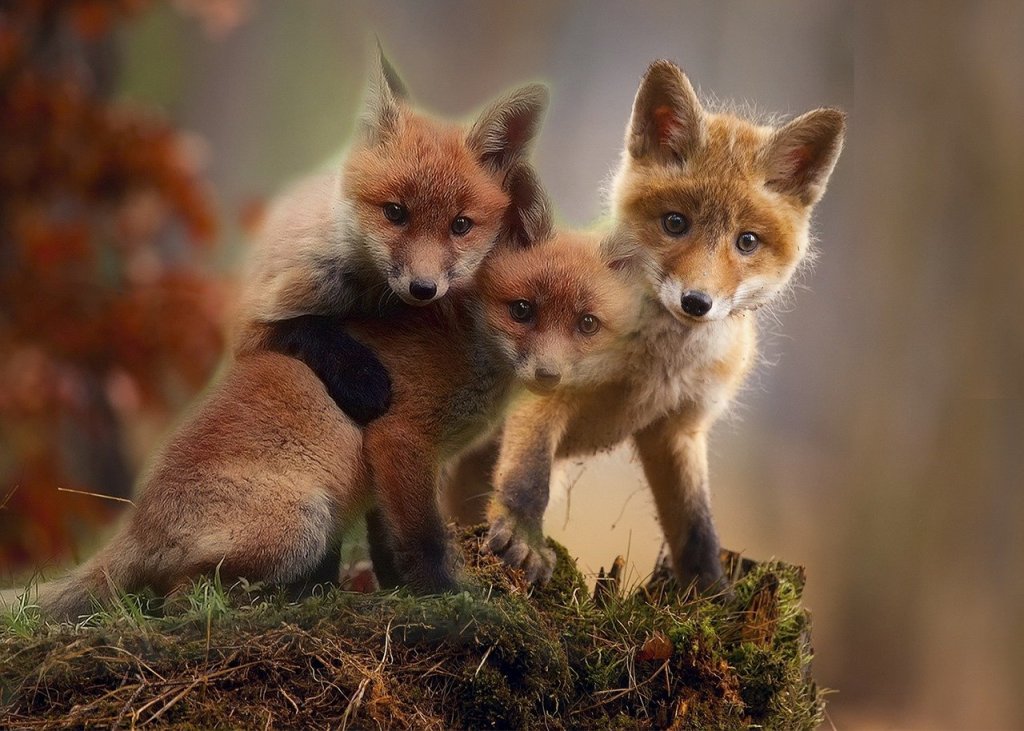I found this series of photos on Pixabay, courtesy of skeeze. They made me laugh, as I’ve seen our dog dive for rats in the bushes in much the same way. Here’s a youtube video of another snowbound fox in action.
We almost ran into a Red Fox a few years back while out walking. We rounded a turn along a bayou that ran behind some yards and there it stood, just looking at us. It startled us because the area is full of houses. Red Foxes appear surprisingly slight up close, especially with their fur thinned out for the summer months. Males, called dogs, typically stand about a foot-and-a-half tall at the shoulders, while females, or vixens, are a bit smaller. They seem like they’re all tail. We had just a few seconds to admire the tail on this one as the fox whipped it around and disappeared.
Red Fox encounters are nothing new for people; the two species have interacted for thousands of years. Like people, Red Foxes thrive in or out of snow. They’re native to almost the entire Northern Hemisphere. The earliest of any known fox species dates to 7 million years ago in Chad, in tropical Africa. Scientists have identified Red Fox fossils in Hungary from 3.4-1.8 million years ago, but believe the species may have migrated there from China. From wherever they originated, Red Foxes roamed into North America about 400,000 years ago.


The Silver Fox is a melanistic Red Fox. Melanism is a genetic mutation that causes overactive development of dark pigment. Albinism is the opposite condition and results in little or no color. We see melanism in most animals, but probably know it best when it occurs in big cats like leopards and jaguars to create black panthers. (Incidentally, panthers don’t exists as an individual species; “panthera” is a genus of cats that includes tigers, lions, jaguars, and leopards. A “black panther” is a melanistic version of any of these, but especially the last two.)

Russian studies show that Red Foxes eat over 300 different types of animals, primarily rodents and rabbits, but also birds, frogs, fish, insects, even worms. Berries, apples, and acorns occasionally populate the menu, as do grasses and tubers like potatoes and yams. Of course, dog or cat foot left on the porch is a welcomed delicacy.
Red Foxes rely on hearing and keen eyesight more than smell to hunt. In the youtube video I linked to above, you’ll notice the fox swaying its head back and forth before it dives into the snow. It’s listening from slightly different angles in order to establish the position of whatever unfortunate animal is down below. (Other predators like owls do the same thing.)
Scientists believe the Red Fox even manages to tap the earth’s magnetic field during its dive-bombing assault. The field generates a shadow in the fox’s field of vision that helps it judge distance, a prerequisite for an accurate pounce.


Red Foxes normally hunt alone, but they don’t always avoid each other. They often live in small family groups called “leashes” or “skulks,” which is especially important when they raise their families. Vixens give birth once a year during spring to produce litters of between four to six “kits.” Often subordinate or young foxes in the family group help to feed the kits. Although Red Fox dogs and vixens tend to pair up for life, they aren’t especially monogamous; studies show that kits of a litter often come from two different fathers. Considering that Red Foxes typically live for two years, it makes sense for fox dogs to mate with as many vixens as possible to propagate the species.

Works Cited
“Black Panther.” Wikipedia.
Castro, Eduardo Venegas Castro. “Nature’s Colors–Albinism, Melanism, and Other Genetic Variations.” Children’s Eternal Rainforest preserve.
“Fox.” Wikipedia.
Lanzendorfer, Joy. “14 Fascinating Facts About Foxes.” Mental Floss. 22 Aug 2018.
Marshall, Michael. “Foxes Zero in on prey via Earth’s Magnetic Field.” New Scientist. 12 Jan 2011.
“Melanism.” Wikipedia.
“Panthera.” Wikipedia.
“Red Fox.” National Geographic.
“Red Fox.” Wikipedia.
“Red Fox.” Wildlife Online.
“Red Fox Breeding–Mating and Monogamy.” Wildlife Online.
“Silver Fox.” Wikipedia.
“Vulpes (true foxes).” Wikipedia.
Yong, Ed. “Foxes Use the Earth’s Magnetic Field as a Targeting System.” Discover Magazine. 11 Jan 2011.
Categories: animals



Fascinating write-up. We run into foxes irregularly near our rural churchyard.
LikeLiked by 1 person
Thank you!
LikeLiked by 1 person
Yprey well.
LikeLike
cool post.
LikeLike